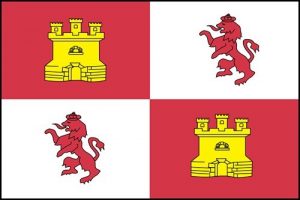1513
Juan Ponce de León and his expedition were the first documented Europeans in Florida. He landed near present-day St. Augustine. Ponce de León named the land “Florida” as the season was “Pascua Florida” (Flowery Easter).
Research indicates Spain had no true national flag in 1513 when Juan Ponce de León landed on Florida shores, but the Castle and Lion flag of the King was recognized as the country’s flag.
1521
Ponce de León returns to Florida in search of gold. Ponce de León is killed in South Florida.
1527
Pánfilo de Narváez leads a second expedition into Florida.
1539
Hernando De Soto landed in Florida with an 800-man expedition.
1540's
European diseases decimate Florida’s native peoples. Within a century 90% had died.
1559
Tristán de Luna y Arellano, with 1500 colonists, attempted Florida’s first settlement, Puerto de Santa Maria (today’s Pensacola Naval Air Station.) It was not successful.
1562
Jean Ribault, France, explores northeast Florida.

1564
France establishes Fort Caroline
FIRST SPANISH PERIOD 1565 – 1763
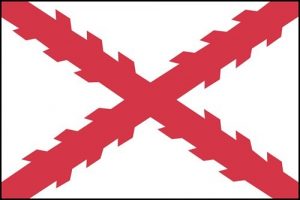
The Burgundian saltire, or Cross of Burgundy, represented Spanish rule in Florida from 1565 to 1763. The red cross symbolized the rough branches of the trees on which Saint Andrew, the patron saint of Burgundy, was crucified. The flag was introduced into Spain by Philip I, Duke of Burgundy, and was later established as one of the country’s banners by his son Charles I in 1516.
1565
Establishment of St. Augustine, first permanent European settlement in North America, located within Timucua territory. Spanish expel the French.
1560's-1590's
Spanish friars spread Christianity throughout the southeast
1672-1695
Castillo de San Marcos built by Spanish in St. Augustine, using native and slave labor
1740
British general, James Oglethorpe, invades St. Augustine
BRITISH PERIOD, 1763 – 1783
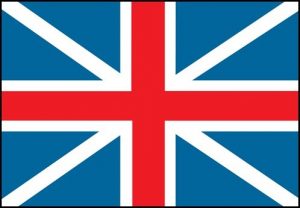
The British flag’s major element was the Red Cross of St. George, England’s patron saint. In combination with the white Scottish Cross of St. Andrew, it formed the Union flag. This flag flew over Florida from 1763 until 1784.
1763
French and Indian (Seven Years War) results in the transfer of Florida from Spain to England. Division of Florida into East and West Florida. The British colonists expand Florida agriculture, especially cotton, rice, and indigo. St. Augustine remains the capital of East Florida, with Pensacola the capital of West Florida. James Grant is appointed Governor of British Florida.
1760's
Native peoples from Georgia and Alabama, many of them members of the Creek peoples, move into Florida. They become known as the Seminoles from the Spanish word cimarron, meaning “outsiders” or “runaways.”
1776
American Revolution begins. Florida remained loyal to England. Its previously sparse population swelled overnight as Tories escaped to Florida, mostly settling in St. Augustine.
1783
Treaty of Paris ends the American Revolution. Spain reoccupies Florida.
SECOND SPANISH PERIOD, 1783 – 1821
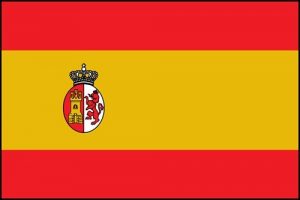
Charles III created this Spanish national flag in 1785. It flew over Florida until the United States took official possession of the territory in 1821.
1816
Andrew Jackson invades Florida in pursuit of Seminole Indians. Start of the First Seminole War.
1819-1821
Florida transferred to the United States under the Adams–Onís treaty.
TERRITORIAL FLORIDA 1821-1845
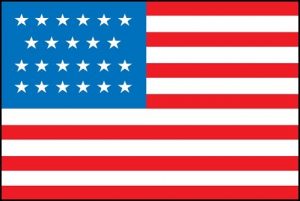
The flag of the United States had twenty-three stars when the Treaty with Spain, ceding Florida, was ratified and proclaimed on February 22, 1821.
1835
Beginning of the Second Seminole War
1842
Second Seminole War ended by U.S. Government decision
1845
The Act establishing statehood for Florida approved on March 3, 1845 by the second session of the 28th Congress.
Upon admission Florida as the twenty-seventh state on March 3, 1845. By law, new stars were added to the national flag on the fourth of July following the admission of each new state, so a twenty-seventh star was added for Florida on July 4, 1845.


